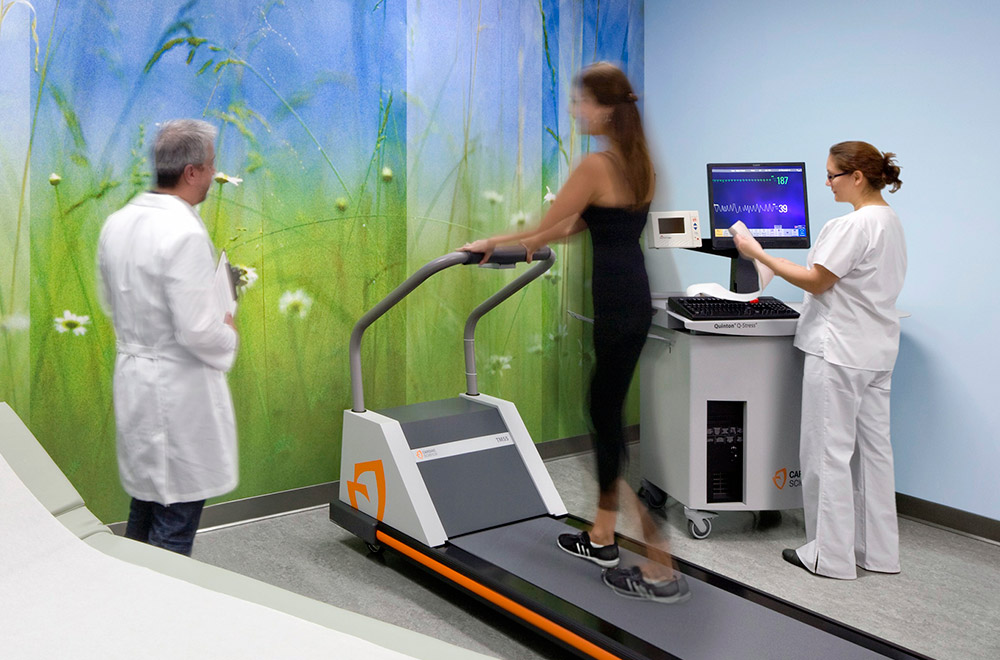Welcome to HMC Architects’ Five in Focus blog series, where we explore the latest trends, ideas, and innovations shaping the future of architecture and design. This series asks our design professionals to tell us what’s capturing their attention and offer some insights.
George Vangelatos, AIA, DBIA, LEED AP BD+C, EDAC, is HMC’s director of healthcare design. Here, he shares his thoughts on AI in healthcare design, the story versus the big idea, cost-effective architecture in California, 2030 seismic regulations, and the color blue.
1. How do designers stay relevant in a world where AI is learning our craft?
In a modern world where artificial intelligence (AI) is rapidly advancing and learning our craft, the question of how designers can remain relevant is a pressing one. Some argue that our innate ability to empathize and connect with people through emotions and sensitivity will always give us a distinct advantage over programmed solutions. Designers are not merely creators; they are trained to listen, understand, solve problems, and often challenge conventional thinking. This capacity to question programmatic needs arises from both experience and intuition. While the possibility of synthesizing intuition through AI may be on the horizon, it’s safe to say that we have yet to reach that point. AI excels at generating possibilities, but the true art of design and the finesse required to create elegant, human-centric connections within our spaces still come more naturally to us. In this ever-evolving landscape, designers continue to find their place by harnessing their unique blend of creativity, empathy, and intuition.
2. The story versus the big idea, which matters most?
When a big idea takes root in a design or concept, most designers instinctively recognize its rightness, often because it appears inherently apparent. This profound notion can carry a design through its entire evolution and eventual completion, marking the job as done. However, as we delve deeper, we must consider the narrative woven into the design. Does it evoke an emotional connection with the community or the occupants? While perfect efficiency, logical functional relations, and unquestionable aesthetics are crucial, more is needed. A more romantic approach that weaves a compelling story to resonate with those experiencing a space can have a more profound impact. Reflecting on the example of Frank Gehry presenting a rose to Lillian Disney while describing the concert hall’s design, it’s akin to viewing art informed by the artist’s story. This narrative makes the experience more relevant and ensures its lasting place in our memory. These musings serve as food for thought in the ever-evolving world of design.
3. Architects trying to be cost-effective in California is like high-altitude training for athletes.
As a California-based architect, I’ve witnessed firsthand the formidable challenges posed by the high construction cost, staffing, and various regulatory and legal factors that significantly impact our financial landscape. Having also worked in states like Nevada, Arizona, and Oregon, where healthcare construction costs can sometimes be half what we experience here, any claims of our cost-effective solutions can come across as out-of-touch when discussed beyond our state borders. Clients who develop business plans in California grapple with the overwhelming impact of operating in our state while being aware of conditions in other U.S. regions. Similarly, many from outside our state may resist or even discourage the use of firms based in California due to our perceived higher costs. It’s akin to athletes training in the most challenging environments to ensure better performance under more favorable conditions. Therefore, our message to them should emphasize that we have honed our skills in one of the most demanding financial landscapes, where not excelling in cost-effective solutions means not delivering work. This unique advantage sets us apart in the world of architecture and design.
4. What will happen to hospitals that don’t comply with seismic regulations by 2030?
For several years, clients have grappled with the daunting challenge of complying with seismic regulations. Some were quick to adopt early measures to mitigate deficiencies, particularly those in the category of new facilities with less extensive work required or high-performing facilities with ample funding resources. However, the true test lies in the small rural campuses that barely break even or often operate at a loss even before considering these upgrades. What compounds this predicament is that much of this seismic work will yield minimal to no return on investment. While the state has granted facilities with special financial needs the option to remain operational beyond 2030, they come with a significant caveat: future permits will be given once the mandatory seismic work is completed.
Additionally, these facilities would bear the stigma of being labeled non-compliant once they rectify the situation. As we stand on the precipice of 2023, it’s worth noting that we are approaching the last responsible moment to commence these construction projects. Most major healthcare endeavors typically demand 5-6 years for design and construction, raising a critical question: Has anyone sounded the panic button yet?
5. I am feeling (the color) blue.
During a recent exercise tasked with creating a retrospective of my work, I stumbled upon my unperceived affinity for blue. Surprisingly, it appeared in many of my projects, usually as an accent material. Curiosity led me to ponder why this might be the case, and I devised a few logical reasons. For one, blue is a popular choice among healthcare clients as a brand color. It can evoke associations with water or the sky, tapping into a biophilic quality that resonates with many. My Greek Mediterranean background may have shaped this preference, or maybe there’s some innate gender bias at play. Someone once mentioned that blue jeans are considered neutral and can be paired with anything, but that might stretch it a bit. To challenge my bias, I recently designed a building for a competition without incorporating this color, opting instead for neutral silvers and earth tones. Surprisingly, the project was selected as the winning design and praised for its elegance and sophistication. However, the client desired to introduce color, as the runner-up had done. As it turned out, that design featured blue tones. So, in the end, it’s not me but the ubiquitous allure of blue that keeps finding its way into my work.

